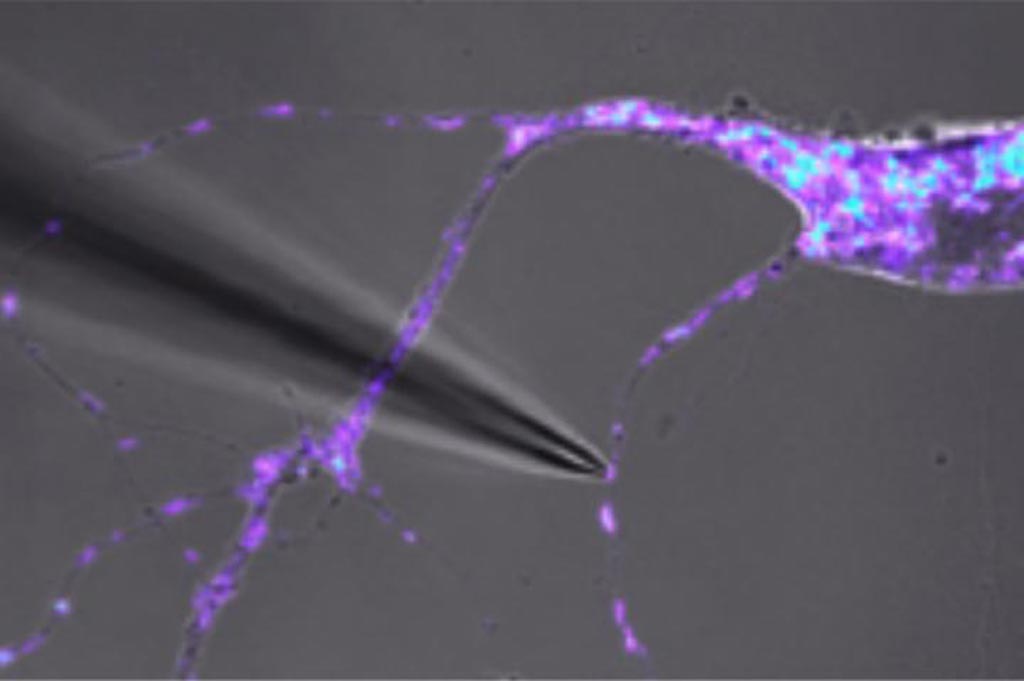Increased Genome Variance Found in Mitochondria DNA Study
By LabMedica International staff writers
Posted on 20 Dec 2017
A team of molecular biologists has developed a method for identification of genetic variants present at the single-mitochondrion level in individual mouse and human neuronal cells, allowing for the extremely high-resolution study of mitochondrial mutation dynamics.Posted on 20 Dec 2017
Mitochondria have been implicated in several human diseases, including mitochondrial disorders, cardiac dysfunction, heart failure, and autism. The number of mitochondria in a cell can vary widely by organism, tissue, and cell type. For instance, red blood cells have no mitochondria, whereas liver cells can have more than 2000. Each mitochondrion is composed of compartments, comprising the outer membrane, the intermembrane space, the inner membrane, and the cristae and matrix that carry out specialized functions.

Image: Manual isolation of a single live mitochondrion. The mitochondria can be seen under a microscope where a thin glass tube can be used to isolate a single mitochondrion from the dendrite region of the mouse neuron (Photo courtesy of Jacqueline Morris and Jaehee Lee, Perelman School of Medicine, University of Pennsylvania).
Investigators at the University of Pennsylvania (Philadelphia, USA) reported in the December 5, 2017, issue of the journal Cell Reports that they used a method for isolation and analysis of the genomic DNA from a single mitochondrion, without loss of its spatial origin within a cell, to investigate the nature of mitochondrial genome variation in human and mouse brain cells. The study considered multiple scales - from different cells in a single individual to different subcellular locations within a single cell.
Results revealed extensive heteroplasmy between individual mitochondrion, along with three high-confidence variants in mouse and one in human that was present in multiple mitochondria across cells. Heteroplasmy is the presence of more than one type of organellar genome (mitochondrial DNA or plastid DNA) within a cell or individual. It is an important factor in considering the severity of mitochondrial diseases. Since most eukaryotic cells contain many hundreds of mitochondria with hundreds of copies of mitochondrial DNA, it is common for mutations to affect only some mitochondria, leaving most unaffected.
The data obtained during this study suggested that even in inbred strains of mice, there was a broad segregating mitochondrial variation, within and across individuals, resulting in a large variation in individual heteroplasmy load. Although the data were more limited, it was evident that human samples showed unusual levels of heteroplasmy arising from within single-mitochondrion polymorphism.
"By being able to look at a single mitochondrion and compare mutational dynamics between mitochondria, we will be able to gauge the risk for reaching a threshold for diseases associated with increasing numbers of mitochondrial mutations," said senior author Dr. James Eberwine, a professor of systems pharmacology and translational therapeutics at the University of Pennsylvania. "This roadmap of the location and number of mutations within the DNA of a mitochondrion and across all of a cell's mitochondria is where we need to start."
Related Links:
University of Pennsylvania














